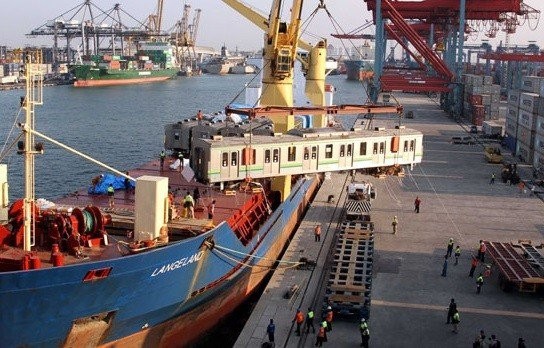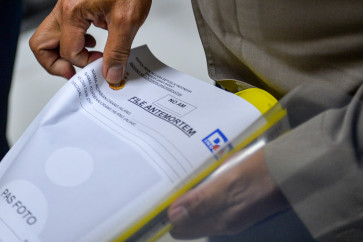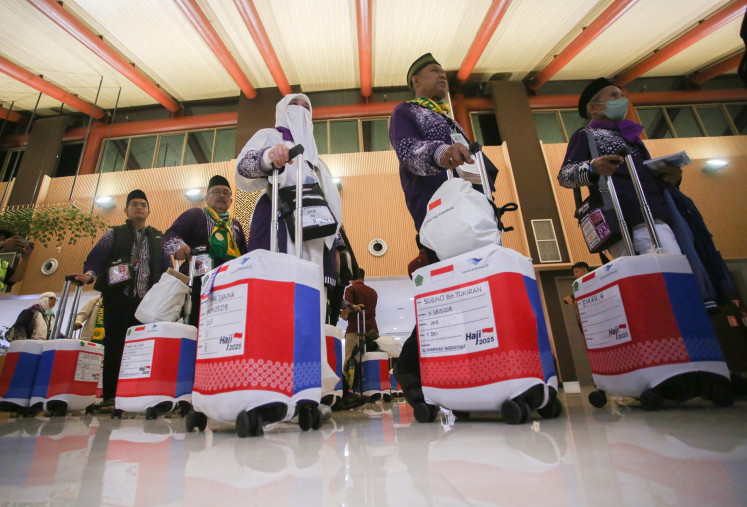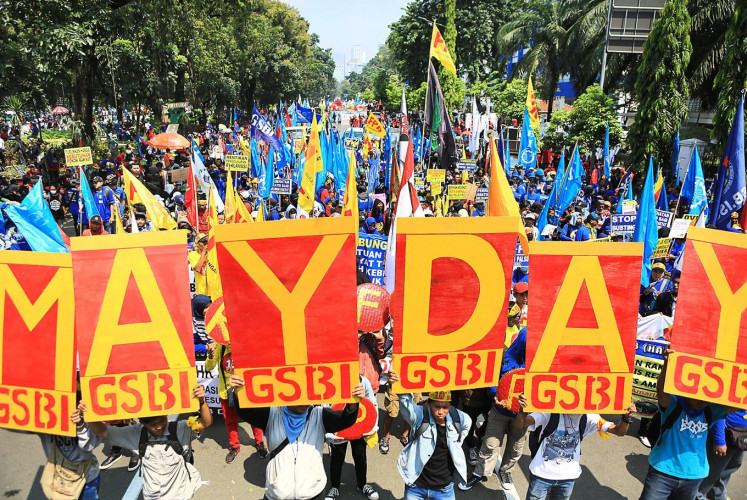Govt moves forward with Patimban deep-sea project
Change text size
Gift Premium Articles
to Anyone
 Workers unload 32 electric cars from Japan at Tanjung Priok port in North Jakarta in a Sep. 19, 2014 file photo. The government plans to build a deep sea port in Patimban, West Java to support the overloaded Tanjung Priok port. (Tempo/M Iqbal Ichsan)
Workers unload 32 electric cars from Japan at Tanjung Priok port in North Jakarta in a Sep. 19, 2014 file photo. The government plans to build a deep sea port in Patimban, West Java to support the overloaded Tanjung Priok port. (Tempo/M Iqbal Ichsan)
T
he government has stepped up its commitment for the Indonesian-Japanese flagship deep sea project in Patimban, West Java, by including the project in its Blue Book.
The Blue Book is a list composed by the National Development Planning Agency (Bappenas) that contains projects to be funded by foreign loans from 2015 to 2019. The inclusion of the Patimban project on the list is as traditionally required in a foreign loan process.
As much as US$1.7 billion in foreign loans is expected to be channeled into the deep-sea project and the Indonesian government is also to provide an additional $595 million in loans for it, according to the Blue Book, after it was revised last Friday.
Following the revision, the Blue Book now lists $10.3 billion worth of loans for transportation-related projects, up from the previous $6.8 billion.
Transportation Ministry port director Mauritz HM Sibarani stated that the $1.7 billion loan figure was still only a proposal from the Indonesian government. “There are still discussions required, such as on the actual amount of the funding,” he said on Monday.
The government has yet to allocate fresh funds for the project as it prefers to wait for a response from its counterpart. “We will then make a yearly commitment,” Mauritz said, adding that the government expected the loan to only be disbursed in about March or April 2017, in line with the beginning of the fiscal year in Japan.
The future Patimban Port will be located about 70 kilometers from the Karawang Industrial Estate and Bekasi in West Java. It will have a container capacity of 1.5 million 20-foot equivalent units (TEUs) once it is partly completed by 2019 and will be expanded to 7.5 million TEUs by 2027, which is half of the Tanjung Priok Port’s capacity.
The Indonesian-Japanese joint project is considered a national strategic project that is expected to help ease the flow of goods and services into the country.
The megaproject was previously planned to be built in Cilamaya, also in West Java, but was moved to Subang as concerns arose that it would disrupt state oil and gas firm Pertamina’s operations.
The government hopes that the new port will provide more ease in distributing goods shipped into the country, which has been plagued by staggering logistics costs.
During a bilateral meeting on the sidelines of the G7 summit in May, President Joko “Jokowi” Widodo also extended a guarantee to Japanese Prime Minister Shinzo Abe that Japan could develop the project.
Japan has been conducting a feasibility study on the port since July, complementing a previous feasibility study carried out by the Transportation Ministry.
Japanese Ambassador to Indonesia Yasuaki Tanizaki previously claimed that the feasibility study for the project had been completed and it concluded that the port’s presence would be necessary to support the country’s growth over the next 10 years.
Japan also expects the draft of its detailed engineering design (DED) to be finished by the beginning of 2017 and will provide exact figures on the project’s costs.
The Japanese Embassy’s economic councilor, Tasaka Takuro, said that the Japanese government welcomed the Indonesian government’s move to include the project in the Blue Book.
“It’s a very good stepping stone for the two countries to proceed with the project,” he said. However, he said that Japan would not make any decision on the matter before completing its research.









